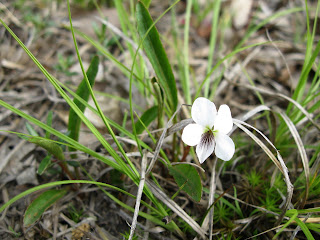Dan humored me last Saturday and accompanied me on a Nature Conservancy walk at their Erie Marsh in Erie, Michigan. The property originally belonged to the Erie Shooting Club. The members continue to hunt there and their service hours help to stretch the dollars used to restore the marsh.
The wind made it a little difficult to see the variety of birds we were all hoping for, but James Cole (the Nature Conservancy Lake Erie birding expert) kept things interesting by giving us tidbits about name origins, nesting habits, songs, and the biology of the species we did see (Baltimore oriole, Blue-winged Teal, Yellow Warbler, Chestnut-sided Warbler, Dunlin, Spotted Sandpiper, Black-crowned Night Heron, Green Heron, King Bird, Cliff Swallow, Tree Swallow, Purple Martin, Cedar Waxwing, Northern Parula, Yellow-rumped Warbler, American Redstart, among others).
I don't try to compete with photographers who use huge lenses to capture song birds, but my tiny plant-photographing camera did a fair job of getting this Fox snake resting in a tree. Our non-bird count included American Toad, Eastern Cottontail, Raccoon (dozing in a tree, as well), Muskrat, Woodchuck, and an unidentified turtle.












